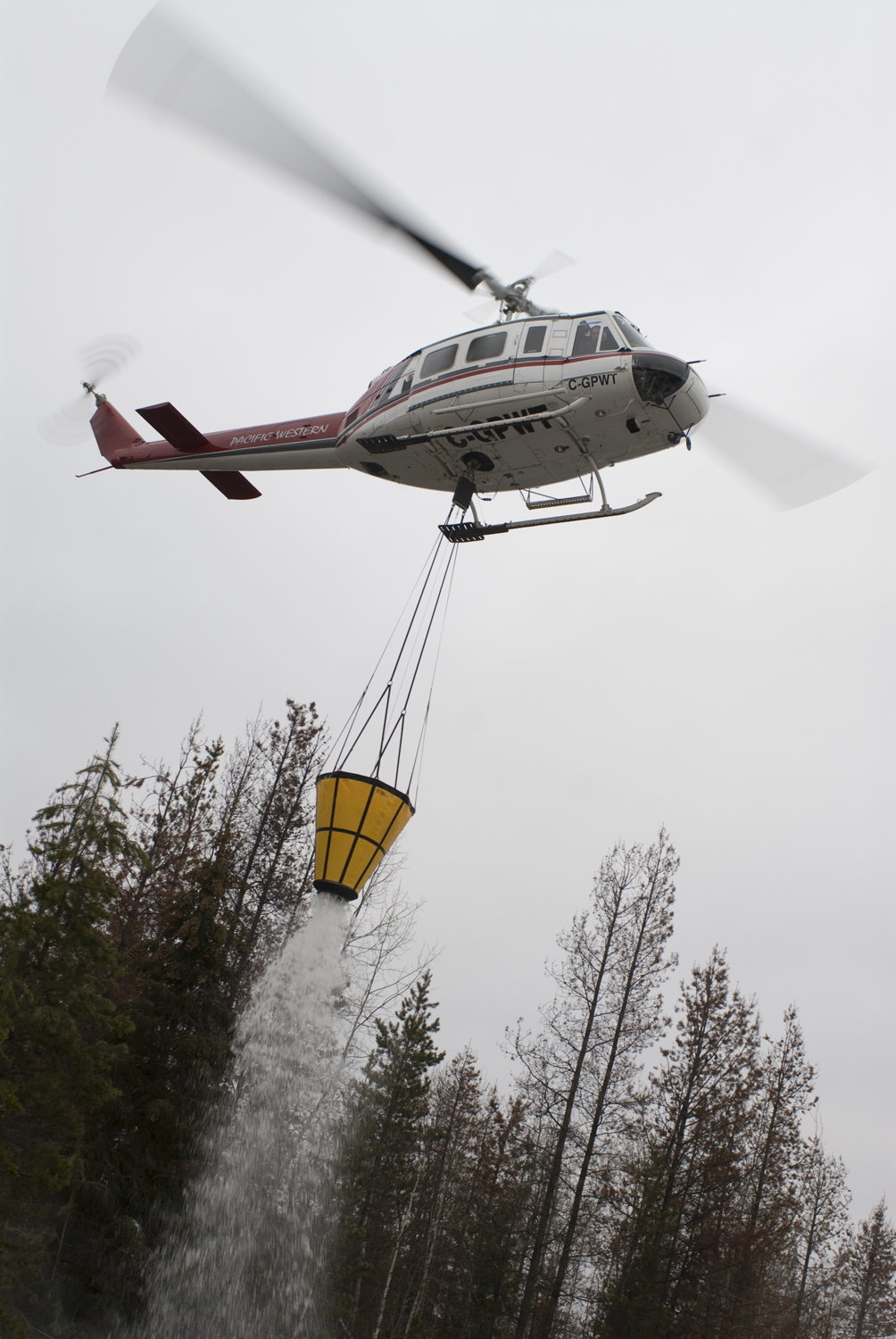Air New Zealand orders Airbus A320s to replace Boeing 737-300s
November 5, 2009
Following an intensive and robust evaluation process, Air New Zealand has ordered 14 Airbus A320 aircraft to replace its existing domestic fleet of 15 Boeing 737-300s. The aircraft will be powered by IAE engines.
The A320, which is larger than the aircraft type it will replace, will enable Air New Zealand to increase capacity on routes that are starting to face capacity constraints at some airports during peak times. Air New Zealand has also placed purchase options for a further 11 A320 aircraft, including the possibility of selecting the larger A321.
“Our 12 Airbus A320s already deployed on short haul international routes are performing well, and moving to one single-aisle aircraft type for both domestic and short haul international routes will immediately deliver added efficiencies in maintenance, crew training, and overall fleet simplification,” said Bruce Parton, Air New Zealand General Manager Short Haul Airline.
The A320 has the widest fuselage of any single-aisle aircraft and is a significant factor in added passenger comfort. A new cabin design offers a significant increase in overhead stowage, dramatic ambience lighting options and noticeable noise reduction.
Enhanced aerodynamics, engine enhancements and improved navigation technology such as “continuous descent approach” keep the A320 the most eco-efficient aircraft in its class.
“Air New Zealand will reap the benefits of selecting a common family of aircraft across their domestic and short haul single-aisle fleet. The A320 prevailed in the stiffest of competitions to show once again, that it is the single aircraft of choice bar none. We are delighted to build on our already close relationship with Air New Zealand with this announcement,” said John Leahy, Chief Operating Officer, Customers.
GOL Pioneers New Global Communication System for Air Operations Management in Brazil
November 5, 2009
Iridium-based program with 100% global coverage allows real-time exchange of information between pilots and airlines
SAO PAULO, Nov. 5 /PRNewswire-FirstCall/ — GOL Linhas Aereas Inteligentes S.A. (“Company”, Bovespa: GOLL4 and NYSE: GOL), the largest low-cost and low-fare airline in Latin America, is adopting a new communications and operational management system with global coverage based on the Iridium satellite network. The new technology, which allows the exchange of information in real time via voice and text message, is linked to the Company’s ACARS (Aircraft Communications Addressing and Reporting System) and can be used as an operational management tool.
The ACARS via Iridium system provides the Company with several benefits: strengthening reliability and operational safety and offering better control of aircraft performance during flight, as well as trimming costs by reducing aircraft weight and streamlining the daily management of the air network. “This type of communications system is the future in airspace management,” declared Fernando Rockert de Magalhaes, GOL’s Technical Vice-President. “It will become increasingly common for pilots and air traffic controllers to communicate through a mixture of voice and text messages, which will ensure greater safety and allow for more efficient cost management,” he added.
The Iridium satellite network functions over 100% of the globe, ensuring reliable and accurate communications between all the different parties making up the air traffic system. The new system will bolster existing resources for integrating the Company’s technical teams (in-flight and on-land) by complementing traditional radio communications. Another system, which is also part of GOL’s ACARS, will enable text messages to be exchanged with air traffic control, further complementing radio communications.
In addition to boosting operational safety, GOL’s Iridium-based ACARS allows the Company to transmit data during flights, thereby making daily operations faster and more flexible. “We will have real-time access to the main aircraft data, such as distance flown, flight time remaining and fuel levels,” explained Adalberto Bosan, GOL’s Operations Control Officer. “Thanks to this information, we will be able to effect changes or replacements in aircraft programming and route operations with more precision and speed,” he added.
In addition, the new ACARS will lead reduce aircraft weight by substituting the printed manuals currently carried on all flights with new data storage technology. “Less weight means more fuel efficiency,” explained Rockert. “The new system reinforces our priority commitment to operational safety, at the same time providing tools that ensure more efficient operations and, consequently, increased control over costs,” he added
Instead of a set of books, pilots can now rely on the Electronic Flight Bag, which functions like a portable on-board electronic library. Easy to use and with a user-friendly interface, its cutting-edge technology allows all the teams involved to receive real-time updates every time an operating procedure is revised.
The equipment and software have been exhaustively tested in the laboratories of Avionica, the system’s Miami-based American supplier. The system has also undergone extensive testing in GOL’s operational areas and will be installed in the Company’s fleet as of January 2010, when the aircraft undergo routine maintenance procedures at the Company’s Maintenance Center in Cofins (MG). Certified in 2008 by the ICAO (International Civil Aviation Organization), the system was included in Standards and Recommended Practices, a conjunction of non-mandatory, but recommended, measures by the global aviation regulatory body.
GOL Implements Organizational Restructuring to Increase Efficiency and Promote Greater Integration
November 5, 2009
SAO PAULO, Nov. 3 /PRNewswire-FirstCall/ — GOL Linhas Aereas Inteligentes S.A. (Bovespa: GOLL4 and NYSE: GOL), the largest low-cost and low-fare airline in Latin America, announces an organizational restructuring designed to streamline business management and reduce the number of Vice-Presidents. The initiative is a response to the Company’s rapid growth in recent years and is aligned with its strategic objectives. All the decisions were taken in accordance with the strictest standards of governance and with the participation of the Board of Directors throughout.
Under the new organizational architecture, the Company’s Chief Financial Officer, Leonardo Pereira, who is in charge of Finance, Controls and Investor Relations, will also be head of the Technology, Business Development and Strategic Planning departments. His new area will be entitled Finance, Strategy and Information Technology.
The Marketing and Services Vice-Presidency will be renamed Market and will comprise the Cargo, Commercial, Corporate Communications, Marketing, Yield Management and Alliance departments. Until this process is complete, the department heads under the new Vice-Presidency will report directly to the CEO.
The position of Vice-President – Information Technology and Planning will cease to exist due to the redistribution of its areas.
Additionally, Ricardo Khauaja, who is currently head of Management & Personnel, will be named Vice-President – Customers, Employees and Management, a position that will include People (Human Resources) & Management, as well as the Customer Service, Airport and Commercial Crew areas.
The Technical area, led by Captain Fernando Rockert de Magalhaes, remains unchanged.
Due to the extinction or change in profile of certain areas, the current Vice-Presidents Wilson Maciel Ramos (IT & Planning) and Tarcisio Gargioni (Marketing and Services) will be leaving the Company, as are Marco Antonio Piller, head of Airports, and Francisco Eustaquio Mendes, head of Maintenance, who were succeeded by Alberto Correnti and Sydnei Casarini, respectively. Ramos, Gargioni, Piller and Eustaquio are all highly competent professional who have made an invaluable contribution to the carrier’s growth, for which they deserve the Company’s recognition and gratitude.
There will be no changes to the structure or heads of other areas, except that those that have been reallocated will be reporting to a different Vice-President.
Air China e Continental Airlines lançam cooperação em programas de viajantes frequentes
November 5, 2009
PEQUIM, 2 de novembro /PRNewswire-Asia/ -- A Air China e a
Continental Airlines lançam cooperação em programas de viajantes
frequentes com início em 27 de outubro de 2009.
Os membros do programa PhoenixMiles da Air China irão ganhar Milhas
Status em todos os vôos programados que são operados pela Continental
e resgatar Prêmios em Viagens para viagens de ida e volta e Prêmios
em Upgrades em todos os vôos programados que são operados e
comercializados pela Continental.
Os membros do programa OnePass da Continental irão ganhar Milhas de
Qualificação Elite (EQM) ou Pontos de Qualificação Elite (EQP) em
todos os vôos programados que são operados pela Air China e resgatar
Prêmios em Viagens para viagens de ida e volta e Prêmios em Upgrades
em todos os vôos programados que são operados e comercializados pela
Air China.
Membros do programa PhoenixMiles da Air China por favor visitem
nosso Web Site no endereço: http://www.phoenixmiles.com ou entrem em
contato com nosso centro de serviços pelo telefone 4006-100-666 para
informações detalhadas sobre como acumular e resgatar suas milhas.
GOL Promove Reestruturação Organizacional Visando Melhorar Eficiência e Integração
November 5, 2009
São Paulo, 3 de novembro de 2009 – A GOL Linhas Aéreas Inteligentes S.A. (Bovespa: GOLL4 e NYSE: GOL), a maior companhia aérea de baixo custo e baixa tarifa da América Latina, anuncia uma reestruturação organizacional. A iniciativa simplifica a gestão empresarial e reduz o número de Vice Presidências e responde ao crescimento rápido da Companhia nos últimos anos, alinhando com seus objetivos estratégicos. As decisões foram definidas dentro dos estritos padrões de governança, com a participação do Conselho de Administração em todo o processo. Na nova arquitetura da organização, a atual Vice-Presidência de Finanças e Relações com Investidores, a cargo de Leonardo Pereira, continua responsável por Finanças, Relações com Investidores e Controladoria e passa a ter sob sua responsabilidade as áreas de Tecnologia da Informação, Novos Negócios e Planejamento Estratégico. Ela passa a se chamar Vice-Presidência de Finanças, Estratégia e Tecnologia da Informação. A Vice-Presidência de Marketing e Serviços passa a chamar-se Vice-Presidência de Mercado. E terá sob sua gestão, as áreas de Cargas, Comercial, Comunicação, Marketing, Yield Management e Alianças. Até a conclusão do processo as diretorias subordinadas à Vice-Presidência de Mercado se reportam diretamente ao presidente da empresa. Com a divisão de suas áreas, é extinta a Vice-Presidência de Tecnologia e Planejamento. A Vice-Presidência de Pessoas e Gestão passa a se chamar Vice-Presidência de Clientes, Colaboradores e Gestão. Ocupada por Ricardo Khauaja, ela passa a ter sob sua responsabilidade, além de Pessoas (RH) e Gestão, as áreas de Central de Relacionamento com o Cliente, Aeroportos e Tripulação Comercial. A Vice-Presidência Técnica, a cargo do comandante Fernando Rockert de Magalhães, permanece inalterada. Em virtude da extinção ou da mudança de perfil das Vice-Presidências que ocupavam, deixam a Companhia os VPs Wilson Maciel Ramos (Planejamento e TI) e Tarcísio Gargioni (Marketing e Serviços). Também deixam a GOL o diretor de Aeroportos, Marco Antonio Piller, e o diretor de Manutenção, Francisco Eustáquio Mendes, que foram sucedidos por Alberto Correnti e Sydnei Casarini, respectivamente. Ramos, Gargioni, Piller e Eustáquio são profissionais competentes, que desempenharam papel relevante no crescimento da GOL e que, por essa razão, merecem todo o reconhecimento e agradecimento da Companhia. Não houve mudanças nas estruturas e titulares das demais diretorias das áreas, a não ser quanto ao reporte das que foram remanejadas entre as Vice-Presidências.
GOL Adota Sistema de Comunicação Global
November 5, 2009
Programa via Iridium tem cobertura em 100% do globo, permitindo troca
de informações em tempo real entre pilotos e áreas da empresa
São Paulo, 5 de novembro de 2009 – A GOL Linhas Aéreas Inteligentes
S.A. (BMF&BOVESPA: GOLL4 e NYSE: GOL), a maior companhia aérea de
baixo custo e baixa tarifa da América Latina, anuncia que passará a
contar um sistema para comunicação e gestão de suas operações com
cobertura global, pela rede de satélites Iridium. A tecnologia
permite a troca de informações - por meio de mensagens de texto e voz,
em tempo real -, sendo associada ao seu sistema ACARS (Aircraft
Communications Addressing and Reporting System) e utilizada como
ferramenta de administração operacional da companhia.
O ACARS via Iridium trará diversos benefícios à companhia: reforço de
confiabilidade e segurança operacional, maior controle da performance
de aeronaves em voo, além da redução e controle de custos, por meio
da redução de peso das aeronaves e maior agilidade na gestão diária da
malha aérea. “Esse tipo de comunicação antecipa futuras tendências
para gestão do espaço aéreo”, preconiza o Comandante Fernando Rockert
de Magalhães, vice-presidente Técnico da GOL. “Será cada vez mais
comum que a comunicação entre cockpit, coordenação de voo nas
empresas aéreas e controladores de tráfego aéreo seja feita por um
conjunto de mensagens de texto e voz, pois isso traz ganhos para a
segurança e para a gestão de custos”, revela.
A constelação de satélites Iridium é eficaz em 100% do globo
terrestre, garantindo confiabilidade e precisão para a comunicação
entre as diferentes partes que compõem o sistema aéreo. O dispositivo
incrementará os recursos para integração das equipes técnicas da
companhia, no comando das aeronaves e em terra, de maneira a
complementar a já tradicional comunicação via rádio. Também acoplado
ao ACARS da GOL, um outro sistema permitirá a troca de mensagens de
texto com o controle de tráfego aéreo, que da mesma forma funcionará
como complemento à comunicação de voz por rádio.
Além dos benefícios para a segurança operacional, o ACARS via Iridium
da GOL conferirá à companhia mais agilidade e flexibilidade para
gerir suas operações diariamente, pelo envio de dados em pleno voo.
“Teremos acompanhamento em tempo real dos principais dados das
aeronaves, como distância percorrida, tempo restante de voo e nível
de combustível”, revela o Comandante Adalberto Bogsan, Diretor de
Controle de Operações da GOL. “A partir dessas informações, poderemos
atuar de maneira mais precisa e ágil nas alterações e trocas de
programação das aeronaves e na operação da malha aérea, contribuindo
para mantermos os mais altos níveis de pontualidade e regularidade”,
explica o diretor.
Outra vantagem é que, com o novo ACARS, a GOL reduzirá o peso de suas
aeronaves, com a introdução novas tecnologias para armazenagem de
dados em substituição ao conjunto de manuais em papel atualmente
embarcado em todos os voos. “Menos peso, mais eficiência no consumo
de combustível”, lembra o Comandante Rockert. “A adoção do novo
sistema reitera nossa prioridade de gestão à segurança das operações,
ao mesmo tempo em que nos dá mais ferramentas para garantir
eficiência operacional e, consequentemente, melhor controle de
custos”, completa.
Ao invés de uma coleção de livros, os pilotos contarão com o
Electronic Flight Bag, que funciona como uma verdadeira biblioteca
eletrônica portátil a bordo, de fácil manuseio e interface amigável.
Trata-se de um dispositivo de última geração, que permite atualização
em tempo real, para todas as equipes envolvidas, a cada vez que a
companhia realizar revisões de procedimentos operacionais.
O conjunto de equipamentos e softwares foi exaustivamente testado nos
laboratórios da Avionica, empresa norte-americana fornecedora do
sistema, com sede em Miami (EUA). O sistema também foi amplamente
testado nas áreas operacionais da GOL e será instalado a partir de
janeiro do próximo ano nas aeronaves da companhia, na medida em que
forem enviadas para passar por procedimentos rotineiros de revisão em
seu Centro de Manutenção, em Confins (MG). Certificado pela ICAO
(International Civil Aviation Organization), em 2008, o sistema foi
incluído entre os Standards and Recommended Practices, conjunto de
medidas não obrigatórias - mas recomendadas - pelo o órgão que rege a
aviação globalmente.
DART Adds Next-Generation Fire Suppression Products
November 2, 2009
Oceanside, Calif., Nov. 2, 2009 — DART Helicopter Services (DHS) today announced a new distribution agreement with Absolute Fire Solutions (AFS) of Calgary, Canada. The partnership enables DHS to bring innovative new technology to aerial fire fighting and provides AFS a strong distribution and marketing channel within the civil rotorcraft industry.
“DART is pleased to be bringing more mission-enhancing equipment to the civil helicopter market,” said DHS President and CEO Jeff Shapiro. “AFS has important solutions for the firefighting community.”
“We’ve developed a leading edge product that adds new capabilities and efficiencies to aerial firefighting operations, and we felt it was time to match that product with an equally innovative and aggressive marketing team,” said Steve Matthews, president of AFS. “We feel we can now focus on developing additional capacities and capabilities for our operator clients, and continue to move forward knowing we are well-represented in the market place.”
DHS will add the entire line of AFS FAST Bucket systems and accessories to its product line, including FAST Foam, FAST Fill’IN, Fast Snorkel, the FAST Cockpit Controller and the FASTtrack data logging system.
AFS products offer new technologies to aerial fire fighting not available elsewhere, and the systems are a good fit with the DHS product line. The AFS FAST Bucket aerial fire fighting system is the world’s first fire-fighting bucket integrating cockpit volume control as a standard feature in every size.
The FAST Bucket has been developed by helicopter operators for helicopter operators, with a standard two-wire plug and play system offers multiple drops and a variable capacity. The variable capacity allows the operator to carry increasing loads, as fuel is consumed, eliminating cinching and operating at half capacity. The FAST design is also collapsible, portable, lightweight, and allows for quick field repair.
The optional FAST Cockpit controller offers advanced control and management of the FAST Bucket, allowing a pilot to pre-select desired load volumes, drop volumes, number of split drops and drop coverage prior to filling.
The new FASTtrack data tracking technology enables flight crews, helicopter managers, and foresters to accurately record aerial fire suppression effectiveness of buckets and tanked rotary or fixed wing aircraft. FASTtrack has the capability to measure, record and transmit in near real time, the quantity of water, retardant, or foam loaded and delivered to a particular location during fire fighting operations. Once the data has been recorded, FASTtrack has the ability to transmit information over SATCOM and AFF systems for near real-time data viewing.
DHS has built a thriving business around a simple idea: developing and marketing innovative helicopter accessories like FAST Bucket. By representing innovative companies like AFS, DHS has expanded its reach and the DART name has become synonymous with quality helicopter accessories.
MOONEY OFFERS INCENTIVES AT AOPA
November 2, 2009
October 30, 2009, Kerrville, Texas— Mooney Airplane Company announces special incentives on inventory aircraft just in time for AOPA Summit. Buyers can choose from limited time options to create a custom package to suit their preferences and maximizes tax benefits.
Incentives include an interest rate as low as 2.99% for the first 48 months of financing based on qualification. This attractive rate makes it possible to enjoy lower monthly payments for the first four years of ownership. Another choice is a cost effective leaseback that enables customers to take maximum advantage of the Bonus Depreciation. This flexible option also allows consumers to use the airplane as a productive part of their business while leaving the routine maintenance to Mooney.
“This is an unprecedented opportunity to own the best,” says Mooney Director of Sales Wayne Fischer.
To learn more about these incentives and see available inventory aircraft, Mooney Airplane Company invites you to visit the outdoor exhibit area of AOPA Summit. Mooney will have two Acclaim Type S aircraft on display at the Peter O. Knight airport. The Summit begins Thursday, November 5 in Tampa, Florida.
Mexican LCC Interjet planning to expand service to the United States
November 2, 2009
The Mexican LCC has announced it is adding four aircraft to its current fleet of 15 in 2010 as it plans to expand its market presence with new service to Texas, California, Chicago and New York. The CEO of Interjet, Miguel Aleman Magnani, announced the airline will close 2009 with a 202% growth and is optimistic about 2010.
Aerogal to launch Guayaquil-New York nonstop
November 2, 2009
The Ecuadorean airline, which has been acquired by German Efromovich to play a role in the Avianca/TACA joint venture, is launching B767 nonstop service to New York. It is also talking about adding Guayaquil-Madrid B767 service in the future. The airline is adding A320 and A319 aircraft to its fleet to support its domestic and regional service.
<







